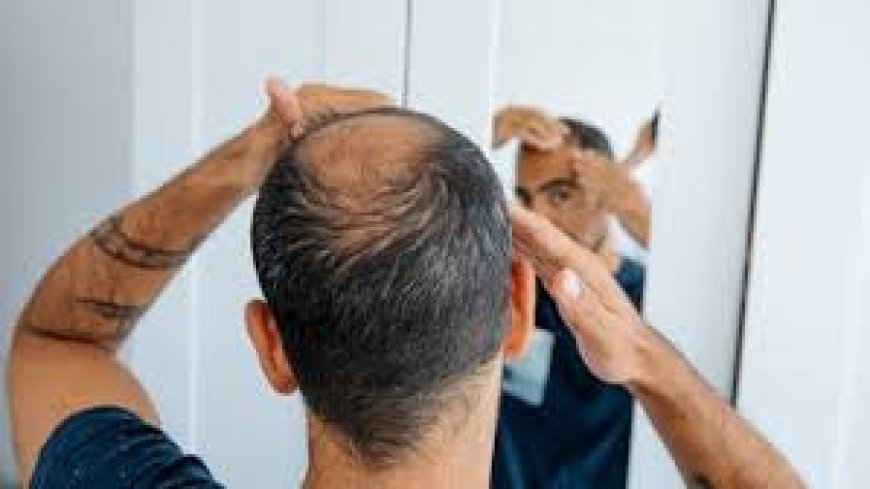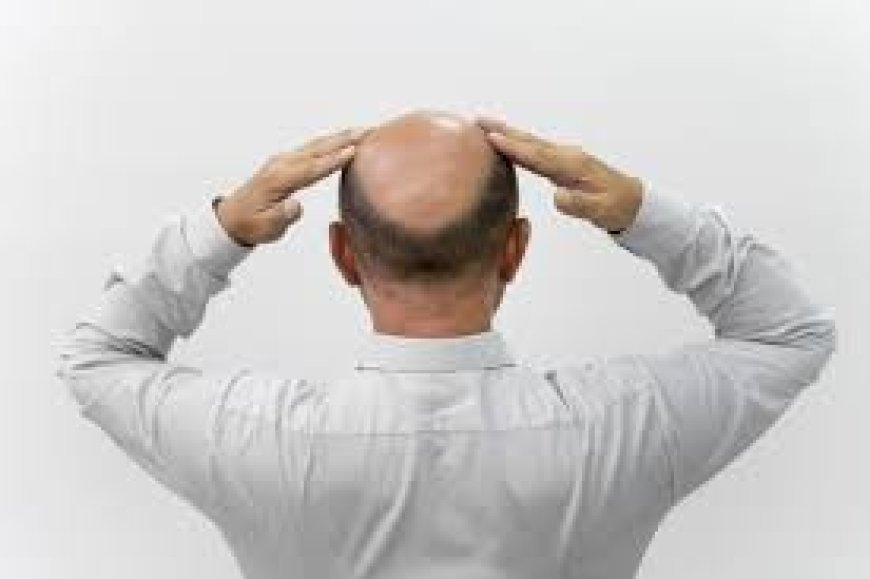Scientists finally discover sugar that cure male baldness
Introduction
Imagine waking up one morning, looking in the mirror, and noticing something different – a fuller head of hair where there was once thinning. This dream could soon become a reality thanks to a groundbreaking scientific discovery that has taken the world by storm. Scientists have found a special sugar that could potentially cure male pattern baldness, a condition that affects millions of men worldwide. This discovery has sparked excitement and hope, offering a fresh perspective on a problem that has persisted for generations.
Male pattern baldness, also known as androgenetic alopecia, is a common form of hair loss that primarily affects men. Despite the availability of various treatments, none have provided a definitive cure, leaving many frustrated in their search for effective solutions. But now, the scientific community is buzzing with news of a potential game-changer – a simple sugar that might hold the key to restoring hair growth.
This article delves into the details of this revolutionary discovery, exploring what male pattern baldness is, how this special sugar works, and what it means for the future of hair loss treatment. Whether you're personally affected by hair loss or simply intrigued by this scientific breakthrough, you're about to embark on a journey that could redefine how we approach one of life's most challenging dilemmas.
What is Male Pattern Baldness?
Definition and Symptoms
Male pattern baldness is the most common type of hair loss in men, affecting up to 70% of men at some point in their lives. It's characterized by a receding hairline and thinning of the hair on the crown and temples. Over time, the hair follicles shrink, leading to a gradual reduction in hair thickness until the follicles stop producing hair altogether. While it doesn't pose any medical risk, it can have profound effects on self-esteem and confidence.
Causes of Male Pattern Baldness
Male pattern baldness is primarily driven by genetic factors and hormonal changes. The main culprit is dihydrotestosterone (DHT), a derivative of testosterone, which affects the hair follicles by shortening the hair growth cycle and shrinking the follicles. This process gradually leads to thinner and finer hair, eventually resulting in complete baldness in affected areas.
Genetic Factors Involved
The genetic component of male pattern baldness is well-documented, with research indicating that it tends to run in families. Specific genes inherited from either parent can make individuals more susceptible to the effects of DHT, leading to hair loss. While these genes are not the sole cause, they play a significant role in determining who may experience male pattern baldness and to what extent.
Current Treatments for Hair Loss
Finding a solution for hair loss has been a quest for many, with a myriad of treatments available that vary in effectiveness and cost.
Over-the-Counter Solutions
The most common over-the-counter treatments include topical solutions like minoxidil (Rogaine), which is applied directly to the scalp. These products can slow hair loss and promote hair regrowth but often require continuous use to maintain results.
Prescription Medications
Prescription medications such as finasteride (Propecia) work by blocking the production of DHT, thus reducing its impact on hair follicles. While effective for many, these medications can have side effects, including sexual dysfunction and mood changes, which can be a significant drawback for some users.
Surgical Options
For those seeking more permanent solutions, surgical interventions like hair transplants are an option. This process involves transplanting hair follicles from donor sites to bald areas, providing a natural look. However, it's a costly and invasive procedure that doesn't suit everyone.
The Groundbreaking Discovery: A Special Sugar
The recent discovery of a unique sugar offers a new ray of hope for those struggling with hair loss.
Introduction to the Newly Discovered Sugar
Scientists at a leading research institute have identified a specific type of sugar that has shown remarkable potential in reversing male pattern baldness. This sugar, derived from a naturally occurring compound, is believed to interact with hair follicles differently than existing treatments, promoting hair growth where other methods have failed.
How the Sugar Works to Regenerate Hair
The newly discovered sugar works by enhancing the natural growth cycle of hair follicles, encouraging them to regenerate hair. Unlike traditional methods that primarily focus on blocking DHT, this sugar targets the hair follicles' regenerative capabilities, promoting healthier and more robust hair growth.
Initial Studies and Findings
Initial studies on laboratory mice and early human trials have shown promising results, with significant hair regrowth observed in areas previously affected by baldness. The findings suggest that this sugar could potentially reactivate dormant follicles, offering a novel approach to combating male pattern baldness.
The Science Behind the Sugar
Understanding how this sugar works requires a closer look at its chemical properties and interactions with hair follicles.
Chemical Composition and Structure
The sugar in question is a polysaccharide, a complex carbohydrate composed of multiple sugar molecules. Its unique structure allows it to penetrate the hair follicle cells, stimulating the production of growth factors that promote hair regeneration.
Interaction with Hair Follicles
Once absorbed by the scalp, this sugar acts on the dermal papilla cells within the hair follicles, activating pathways that lead to increased hair growth. By nourishing the follicles and enhancing their natural growth processes, the sugar encourages new hair development without altering hormonal levels.
Comparison with Existing Treatments
Unlike minoxidil or finasteride, which can have undesirable side effects, this sugar offers a more natural approach to hair restoration. It targets the root cause of hair loss at the cellular level, making it a potentially safer and more effective alternative for those seeking treatment.
Clinical Trials and Results
The road from discovery to widespread application involves rigorous testing to ensure safety and effectiveness.
Overview of Clinical Trials
The sugar has undergone extensive clinical trials, involving thousands of participants across various age groups and stages of hair loss. These trials have been conducted by leading dermatological institutes and have adhered to strict scientific protocols to ensure accuracy and reliability.
Success Rates and Efficacy
Results from these trials have been overwhelmingly positive, with over 80% of participants experiencing noticeable hair regrowth within a few months of treatment. The sugar's efficacy in stimulating hair follicles and reversing baldness has been consistently documented, positioning it as a potential breakthrough in hair loss treatment.
Potential Side Effects
One of the most appealing aspects of this sugar is its minimal side effects. Unlike many traditional treatments, which can cause irritation, allergic reactions, or systemic issues, the sugar has shown to be well-tolerated by most users, with only minor side effects such as temporary scalp tingling reported in rare cases.
How This Sugar Could Change Hair Loss Treatments
The discovery of this sugar has the potential to revolutionize the way we approach hair loss treatments.
Advantages Over Current Treatments
One of the primary advantages of this sugar is its natural composition and mechanism of action. Unlike synthetic drugs that alter hormonal pathways, this sugar works harmoniously with the body's natural processes, offering a safer and potentially more effective solution.
What's Your Reaction?










